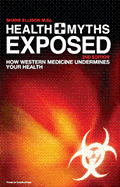HOW SAFE ARE YOUR DRINKING & AGRICULTURE WATER SUPPLIES?
By
Rosalind Peterson
August 30, 2009
NewsWithViews.com
CITY OF WEST SACRAMENTO, CALIFORNIA WATER QUALITY INFORMATION FROM JUST ONE WATER DISTRICT
Drinking water quality is of primary importance to every citizen in the United States. The story below is just one of many being played out across the United States today. We all need to know what is in our drinking water and how it relates to public health. Everyone has the right to know what is in their drinking water not only at the drinking water tap, but what is in the water that irrigates our food crops and that our animals drink. We need to know just how safe bottled water is, if plastic baby bottles are safe, and if plastic water containers (and tin can linings), are leaching contaminants into the water we drinking.
Recently
the Agriculture Defense Coalition obtained information regarding water
quality in the City of West Sacramento, California, from the California
State Department of Health, Drinking Water Division, in Sacramento,
California. The State of California is the repository of all drinking
water tests for every public water supply facility or public well in
California. (The data is on CD and is free of charge to anyone who requests
this information under the California Public Records Act.)
Stunned by the results of this inquiry it became very important that
the public using this water for drinking and irrigation be informed
of the startling results of this ongoing investigation. Clearly, even
from the data in the 2008 West Sacramento “Consumer Confidence
Report,” it is imperative that everyone who receives this water
be informed of the alleged dangers in using this water for drinking,
cooking, bathing, crop irrigation, and yard watering.
The following quote, written in microscopic size in their brochure, is from the 2008 West Sacramento Water Quality Report:
‘IMPORTANT INFORMATION FOR IMMUNO-COMPROMISED PERSONS”
“Some people may be more vulnerable to contaminants in drinking water than the general population; immune-compromised persons such as persons with cancer and undergoing chemotherapy, persons who have undergone organ transplants, people with HIV/AIDS or other immune system disorders, some elderly, and infants can be particularly at risk from infections. These people should seek advice about drinking water from their health care providers…”
“DRINKING WATER CONTAMINANTS”
“All drinking water, including **bottled water, may reasonably be expected to contain at least small amounts of some contaminants. The presence of contaminants does not necessarily indicate that the water poses a health risk...”[2]
*Please
note: The water tests results in the City of West Sacramento 2008 report
are not current, but represent 2007 water test results. In some case
this is summarized data and not actual test results. Thus, the public
is allegedly notified about contaminants in drinking water almost one
year after the testing results are known to water districts who provide
water to the public. This does not enable the public to protect themselves
from any current or ongoing adverse water test results in real time.
It means that any exposure to chemicals due to drinking water contaminants
may not be reported to hospitals, doctors, the press or the public in
real time so that the public can protect themselves or their children.
• It should be noted that vast majority of our
health care providers are not experts in drinking water contaminants
or what contaminants are found in the thousands of drinking water sources
in the State of California or other states. Thus, they would be unable,
at any given time, to access these contaminant test results or any threats
to public health or their patients from these contaminants.
• The majority of doctors would not know which well, water district, winery, bottled water [4], or other drinking water sources are being used by their patients. Thus, they would not be able to determine medications or drinking water alternatives to their patients.
•
The majority of doctors are unaware of the vast array of chemicals found
in drinking water sources in the State of California (or other states),
or the health effects from these chemicals unless they specialize in
this field or are warned by the State of California Department of Health,
Drinking Water Division or their local water districts.
• When should water providers advise the public
that all drinking water may be expected to contain contaminants? Is
the public advised when these contaminants pose a health risk in real
time in order to take precautions? Our investigation reveals that the
public is not given timely announcements [6]. The City of West Sacramento
consumer confidence report does not address these issues except to state
that the public should check with health care providers who, for the
most part, do not know what chemicals are showing up in drinking water
tests or the source of water that is being used by patients, who may
be using a variety of sources such as bottled water, well water, or
water district water.
• It should also be noted that older and new rice pesticides have the possibility of filtering into this drinking water system at City of West Sacramento raw water intakes. The City of West Sacramento has expressed concern about these pesticides and also about agriculture drainage as being potentially contaminating of surface water which is used by the water district customers. It does not address all of the precautions that they are using to protect the public or if their water treatment plant can remove the myriad of pesticides, herbicides, industrial, and other toxic chemicals.
The
City of West Sacramento receives it water from one of the most polluted
sources in the State of California. The staggering number of positive
readings for agriculture herbicides, pesticides, industrial waste products,
uranium, PCBs, etc., is beyond comprehension. No water treatment plant
can address the synergistic impacts of combinations of these chemicals
nor hope to remove all of them from your drinking water sources.
In addition, the water is used for irrigating backyard gardens, agriculture
food crops, lawns, public lands, landscape watering, etc. Millions of
gallons are used on soils and could contaminate local wells and other
water sources in the area. Some wells draw water straight from river
and they are not tested for these chemicals as they are private, single
use wells.
Various types of contaminants may or may not be totally removed from water in the treatment process. The City of West Sacramento does not specify how these contaminants are collected or where these contaminants are disposed of after being removed during the treatment process. Where does the contaminated water go along with the toxic particulates and sludge after removal?
There are many questions and few answers for the public. We have graphed many of the water test results obtained from the California State Department of Health, Drinking Water Division, from the City of West Sacramento and other water districts in California, to make it easier to understand the number of contaminants and scope of these test findings. (The policy of most water districts has been to average their test findings over a one year period and then to report those results approximately one year later when no steps can be taken to protect the public.)
• This means that unusual spiking of drinking water tests over state and federal standards are not reported in real time to the public and they may not be removed by the treatment process.
• Since the water tests are not completed instantaneously, due to the type of testing protocols, the time it takes to complete the tests, and the time it takes to evaluate the hundreds of tests, the water may be in your tap before spikes above state and federal standards are detected.
• It should also be noted that the City of West Sacramento does not specify what they would do with contaminated water after intake if it is found to be contaminated, above state and federal standards, and their treatment process cannot remove the contaminants.
• Does the City of West Sacramento have a way to release contaminated water so that it does not go directly to the consumer and is their system adequate to redirect this water to a site that can isolate this contaminated water so that it does not contaminate any other drinking water sources or soils? [7] [8]
• There are synergistic combinations of the individual water contaminants found by the City of West Sacramento. How many tests are conducted on these contaminant combinations to determine if they can be removed by the water treatment plant?
• Does the City of West Sacramento treatment plant have the ability to remove arsenic from drinking water?
• Private water filters may not always be safe or remove some toxic chemicals. [3]
• Bottled water may not be as thoroughly tested as water from your local water district and it may not be as safe. There are many questions being raised at this time about bottled water safety.
There are many issues to be addressed at this time and immediate public hearings should be conducted on the many contaminants found in City of West Sacramento water supplies. These contaminants are from a variety of sources, industrial plants, agriculture, uranium mining, and may also include airborne sources – see the California Air Resources Board reports. [6] [8]
The protection of our drinking water supplies and the health of the public are issues of great concern to everyone and it is time to take additional action to protect the public. These issues affect every citizen of the United States. This City of West Sacramento water issues are just one example of the hundreds of water districts or other water supplies which may have problems. We all need to be vigilant about the source of our water supplies and the treatment, or lack of treatment, to remove toxics from our water. We also need to look at the source of these contaminants and begin to clean up contaminants at the source.
|
Subscribe to the NewsWithViews Daily News Alerts! |
U.S. citizens have the right to know what is in their water supplies. The EPA requires drinking water testing for a wide variety of toxic chemicals in drinking water and these test results are required by law to be made public. (Do not accept summaries of water test data when requesting such data – actual water test results are available to the public upon request in every state.) We each have a responsibility to check with our water supplies or have our wells tested to be sure that we are not being exposed to toxic chemicals to protect our health and the health of our families. Your state or water provider must comply with EPA laws and release the results of all drinking water tests upon request…it is the law.
For
more information contact: Rosalind Peterson (707) 485-7520 Or, E-mail:
info@californiaskwatch.com
Website: californiaskywatch.com
Website: agriculturedefensecoalition.org
Additional Information:
1- *The California State Department of Health Water Quality CD (1984-2006) may be obtained free of charge by contacting the California State Department of Health, Drinking Water Division. Upon request the Water Quality CD containing all water quality data, consisting of DBF tables will be created and mailed to you. You should receive it in approximately one week; there will be a Word document that will explain the contents of each table on the CD. The website address requested for Drinking Water and Environmental Management Division. California Department of Public Health Drinking Water Program - Telephone: (916) 449-5568 Fax: (916) 440-5602, 1616 Capitol Avenue, Suite 74.421, Sacramento, CA 95899-5052 - Email Address: edt@cdph.ca.gov
2- **We now know that the lining of canned goods, bottled water containers, and baby bottles contain bisphenol-A or BPA which leaches out of the container and into the food product or water. Thus, it is questionable whether bottled water is safe for infants, children or adults. Researchers have found that BPA could cause memory or learning problems and depression.
Toxic chemical still found in 'BPA-free' bottles: Health Canada By Sarah Schmidt, Canwest News Service – August 2009 Toxic chemical still found in 'BPA-free' bottles: Health Canada
OTTAWA - Health Canada scientists have found bisphenol A leaching into the liquid of plastic baby bottles marketed to parents as being free of the toxic chemical marketed to parents as being free of the toxic chemical. The study says "traces" of the toxin were found in "BPA-free" bottles while internal correspondence between a department official and the lead scientist went further, characterizing the amounts in two brands as "high readings."
3- Court House News Service - Water Filters Leak Arsenic, Group Says – August 6, 2009 By MARIA DINZEO
SAN RAFAEL, Calif. (CN) - Proctor & Gamble's and Omnipure's "activated carbon" filters release arsenic into water and the companies are not warning consumer of it, the Center for Environmental Health claims in Marin County Court – California.
"Arsenic is present in the activated carbon used in the filers and replacement filers of defendants' drinking water filtration systems," the complaint states. "People who use the products, including children, consume water from the products after arsenic has leached from the products into the water."
The Center claims Omnipure and Proctor & Gamble violate California's Proposition 65 by failing to warn consumers about the risks of cancer and birth defects from the arsenic. It demands fines of $2,500 per day for every Proposition 65 violation, and an injunction. It is represented by Eric Somers with the Lexington Law Group of San Francisco.
4- California EPA Bottled Water Questions & Answers – Website 2009, Link 1, Link 2, Link 3, Link 4.
5- The review demonstrated unusual spiking patterns, across California, for some toxic drinking water contaminants that that raise concerns about air borne and other pollution sources. This review raises serious questions about why the public has not been informed of these unusual spiking patterns by the California State Department of Health. This list includes, but is not limited to, the following contaminants:
Aluminum, Barium, Iron, Manganese, Magnesium, Sodium, Boron, Arsenic, Strontium, Uranium, Strontium-90, Antimony, Beryllium, Bromine, Cadmium, Calcium, Copper, Lead, Nickel, Silver, Thallium, Titanium, Vanadium, Zinc, Sulfide, Sulfate.
The California Air Resources Board tested for most of these airborne contaminants between 1989 and 2002, and found significant increases or spiking in these many of these pollutants.
Perchlorate, Sulfur Hexafluoride (SF6), Phosphorus, Lithium, Rubidium, Silicon, Silica, Tin, Tritium, Tungsten, and Yttrium are not currently being tested for in California Drinking Water Supplies and should be added to the list of chemicals tested by the State of California due to health effects associated with exposure. Many of these same contaminants are showing up in California State Air Resources air testing results throughout many parts of California. Neonicotinoids (insecticides), should also be added to the list of water contaminants as they may be responsible for Honey Bee and other pollinator declines. (Note that carbon black and silver iodide should be also added to this list.)
6- NYTimes August 23, 2009 How Safe is Your Drinking Water?
7- New York Times August 22, 2009 – Toxic Chemicals in Your Drinking Water –How Safe is Your Drinking Water? 5 Part Series
8- NY Times January 2, 2009 – East Tennessee Water Tests Found Toxic Chemicals in water tests.
� 2009 - Rosalind Peterson - All Rights Reserved











